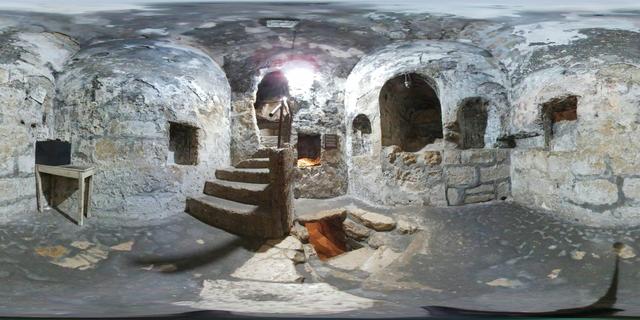Since 2016, Pro Terra Sancta, in collaboration with the Mosaic Center, has initiated archaeological excavations and conservation efforts at the Bethany site. The primary aim of the project is to ensure that tourism benefits the local communities, thereby helping to alleviate poverty.
The village of Bethany, known in Arabic as al-Azariyeh ("place of Lazarus"), is recounted in the Gospels as a village of friendship and hospitality. It is identified as the village of Mary and Martha, where Jesus resurrected their brother Lazarus (John 11:1-44) and where he was anointed by a woman in the house of Simon the Leper (Matthew 26:6-13, Mark 14:3-9), whom John identifies as Mary (John 12:1-8).
Today, Bethany is the scene of conflict: since 2002, the city has been divided from nearby Jerusalem by the Israeli separation wall. The struggle between the two factions has resulted in a context of economic depression and cultural deprivation that heavily affects the local community.
In recent months, we have focused on training specialized personnel, thanks to the support of the Italian Cooperation (AICS) and three universities, two Italian and one local: Al Quds University, the University of Palermo, and the University of Turin. The commitment is primarily directed towards young people, who can then showcase to visitors the importance of conserving and enhancing the site. The project also supports some micro-enterprise activities of local women's associations, with the support of the Al Hana Women Association, promoting the production of artisanal products tied to the territory. Among these, scented candles with essential oils are particularly appreciated, recalling the tradition of Mary anointing Jesus.
The archaeological excavation and conservation work have made numerous previously inaccessible areas accessible. Together with local youth and supporting organizations, we are contributing to transforming a degraded place into a richly historic reality capable of telling its story—a fertile ground for new conservation projects, local employment, and civic engagement. Many local entities are involved in the work areas: the Franciscan Custody, the Greek Orthodox Patriarchate, the al-Uzeir Mosque, the Bethany municipality managing the Tomb of Lazarus and some families, in addition to the Department of Antiquities of the Palestinian Ministry of Tourism. The Bethany project is a collectively spirited endeavor, involving various personalities—academics, politicians, religious figures, students, visitors, and locals—in constant dialogue around encounter and mutual respect. The preservation of cultural heritage ensures the diversity and richness of the territory, enhances it, and allows various communities to be represented, not forcibly erased.
In 2023, approximately 1,000 children from Bethany participated in educational and experimental archaeology activities; 531 were local workers involved in restoration activities, and about 100 were visitors to the site. We conducted a total of 63 educational activities.





























